Content
Clematis are perennial climbing plants belonging to the Ranunculaceae family. These are very popular flowers that are used for decorative vertical gardening of adjacent areas. Usually, mature clematis bushes bloom beautifully and luxuriantly, but it happens that flowering is weak or absent altogether. Information about what reasons cause this “behavior” of a plant and what to do to make it bloom will be useful to many beginners, and not only gardeners.
The main reasons for the lack of flowering
There are many such reasons. For example, a lot depends on the chosen variety, the place where the plant is placed, whether it is planted correctly or not, how it is cared for, and much more.
Clematis may not bloom if:
- The plant is planted in the wrong place or planted incorrectly.
- The soil is too acidic or wet.
- The seedling was damaged or diseased.
- The bush is not properly cared for.
- The soil is low in nutrients.
- The plant is overgrown weeds.
- The bush has reached the age of physiological aging.
- The plant is weakened by diseases or pests.
- The bush is not pruned in accordance with the pruning rules recommended for the group to which the variety belongs.
The lack of flowering can be caused by one or several reasons at once.
All it needs is timely, competent care so that it can take root well and grow healthy, powerful shoots. Clematis begins to bloom at 2-4 years.
Improper planting and care
In order for clematis to bloom profusely and annually, it must grow in a well-lit place, but not in the sun. The best site for this vine is where there is a lot of sun in the mornings and evenings, and in the afternoon everything is in partial shade. In addition, the place for clematis should be protected from wind and drafts, since the plant does not like them. This is why clematis are often planted near buildings or fences, not only because they act as a support, but also because in such places optimal conditions are created for their development.
The second condition for proper planting is suitable soil, which should be fertile, but light, loose, air- and moisture-permeable.
It should not be acidic; if this is the soil on the site, then it must be limed by adding lime or dolomite flour. The ideal soil reaction is neutral or slightly alkaline.
Planting holes must be deep and wide enough (at least 0.7 m) so that the entire root system of the seedling fits into it without any problems. At the bottom of the pits, drainage should be laid from broken bricks or crushed stone, and a mixture of 0.15 kg of complex fertilizers, 0.2 kg of dolomite flour and 2 cups of ash should be added.The distance between them when planting plants in groups should be at least 1-1.5 m: this is exactly what is needed for them to develop successfully.
It is also important to plant clematis correctly: its root collar should be located 10-15 cm below the soil level (1-2 internodes). If the plant is already mature and planted too high, then you need to hill it up like a potato. How to plant a clematis seedling correctly, and what mistakes to avoid, is shown in the photo.
Lack of nutrients and aging of the bush
Clematis is a perennial vine, capable of living in one place for decades without transplanting. (20-40 years old). But, like all living beings, it ages, so over time its flowers begin to become smaller, their number decreases, as does the duration of flowering.
However, young clematis may not bloom if they lack nutrition. Therefore, every gardener needs to make it a rule to feed their vines, starting from the second season after planting. To do this, every spring at the very beginning of the growing season, the bushes need feed nitrogen fertilizers. Nitrogen stimulates the growth of young shoots and leaves. The green mass allows the bush to develop well and reserve strength for subsequent flowering.
During the period of budding and flowering, clematis requires a complex mineral fertilizer containing phosphorus and microelements. Phosphorus allows the plant to form bright and large flowers and maintain flowering time. After its completion, the bushes are fed with organic matter so that they have time to prepare for the winter period.To provide additional nutrition and improve soil characteristics, peat is scattered around the bushes throughout the season.
It is also important to ensure that clematis is not overgrown with weeds and that any other cultivated plants do not grow too close to it: they will take away nutrition from it, which will naturally affect flowering.
Pests
Even the most resistant plants have pests and diseases, and clematis is no exception. It can be affected by a nematode, which settles on the roots and depletes the bush, slugs, bugs, aphids, and mealybugs. The roots can be eaten by mole crickets, and small rodents can eat not only the roots, but also the shoots.
All these pests must be dealt with at the first signs of infection, otherwise you may not wait for flowering. Methods of destruction:
- Nematodes - adding nematicides to the soil a month before planting the seedling.
- Aphids, bugs and scale insects - spraying the plant with insecticides or a solution of tobacco dust.
- Slugs - treating plants with insecticides, 1% copper sulfate or collecting animals by hand.
- Rodents - installation of traps and baits with zoocides.
Clematis can be susceptible to diseases such as gray mold, rust, alternaria, leaf spot, yellow mosaic, verticillium wilt, and fusarium. To prevent infection of clematis, the soil around the bushes should be mulched with a mixture of sand and ash in a ratio of 10 to 1, and if the plant is already infected, it should be treated with fungicides.
Additional factors
Flowering and, in general, the well-being of a plant are also influenced by how it overwinters. Clematis survive without shelter only in the southern regions; in the rest they need to be covered. Cover the plants before the onset of cold weather, after pruning.In the spring, the shelter is removed and the shoots are tied to supports so that the clematis can start a new season.
What to do to make clematis grow and bloom well
If we start in order, then, first of all, you need to choose a strong and healthy seedling. This should be a 1-2 year old plant, with a well-developed root system and several buds (for varieties that require pruning for the winter), healthy, thin, intact shoots up to 0.2 m long (for other varieties) and green leaves (not light and not dark).
When choosing a seedling, you need to consider what variety it belongs to in order to prune it correctly in the future. This is important, since all clematis are divided into 3 groups according to the method of pruning. If clematis is to be planted near a building, then you need to maintain a distance from the wall of at least 0.5 m and place a decorative support near the bush to direct the plant in the right direction.
Twice feeding
Without feeding, it is impossible to get clematis that blooms attractively and profusely. For this plant, you can apply a scheme in which a small amount of fertilizer is applied 2 times a month, starting in April-May, when shoots begin to grow. First, clematis is fertilized with a weak solution of mullein (1 tbsp per 10 l) or bird droppings (1 tbsp per 15 l). A bucket of this liquid is poured under each bush. When nitrogen fertilizer is applied a second time, saltpeter is used (1 teaspoon per bucket).
With the onset of flowering time, ash is used instead of manure, superphosphate and potassium salt instead of nitrate. Fertilizers are applied in the same doses as nitrogen. The liquid is not poured under the root, but at some distance from it. On acidic soils, lime milk is used, which is prepared from 0.3 kg of garden lime and 10 liters of water.
Stimulants
Clematis responds well to feeding with synthetic flowering stimulants. After their use, its flowering becomes more magnificent and intense, the buds and flowers become larger, and the color of the petals becomes brighter. For these purposes, you can use humates, special preparations, for example, Bud, Zircon, Epin, etc. Treatments can be carried out repeatedly during the entire flowering period.
Watering
Water clematis regularly, about once every 2 weeks, and in extreme heat, increase the frequency of watering. The volume of water poured under each bush should be such that the soil is moist at a depth of at least 0.5-0.7 m (about 3-4 buckets per adult bush).
You can also dig 3-4 pieces of wide plastic water pipes near the bush, directing them obliquely towards the plant and pour water into them. To reduce the rate of moisture evaporation, the soil around the bushes needs to be mulched with straw, hay, and dry leaves. If there is no mulch, then loosening should be done after each watering.
Trimming
Pruning clematis is very important: if it is done incorrectly, the bush will bloom poorly or will not bloom at all. All clematis are divided into 3 groups:
- 1 – varieties that bloom on last year’s shoots;
- 2 – varieties that bloom on last year’s and current year’s shoots;
- 3 – varieties that bloom on young shoots of the current year.
That is why, if the pruning was carried out incorrectly: all the shoots were cut out or, conversely, unnecessary ones were left, then the clematis will not bloom.
How to prune clematis correctly? The shoots of plants that belong to the first group are removed from their supports before the onset of cold weather and cut at different heights: from 1 to 1-1.5 m.At the same time, all dry, broken and weak ones are completely cut out. The cut ones are tied together and placed on spruce branches laid out on the ground. They are also covered with branches on top, covered with a thick layer of dry leaves (or peat, sawdust) and covered with roofing felt, in which several holes are made for air circulation inside the shelter.
Clematis second group pruned at a height of 1 m or higher, also removing all unsuitable shoots. They are covered for the winter in the same way as the plants of the first group. Shoots on plants third group cut at a distance of 0.15 m from the surface of the earth and cover the bush with peat, sawdust, sand, leaves to a height of 0.3-0.5 m, cover the top with roofing felt.
Conclusion
If clematis does not bloom, you need to find out why this is happening and eliminate the cause. Only in this case can you grow a luxurious plant that will delight the gardener with its lush blooms every season, without interruption.

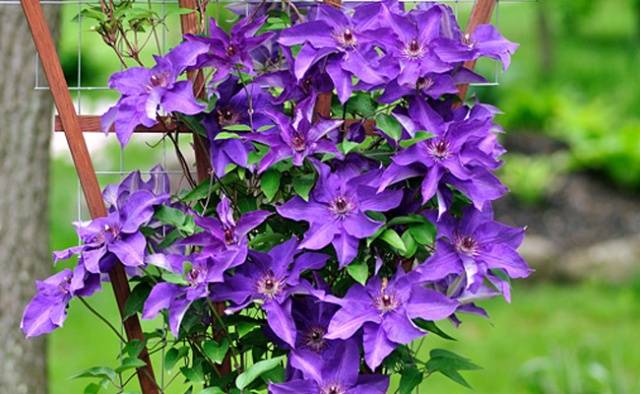
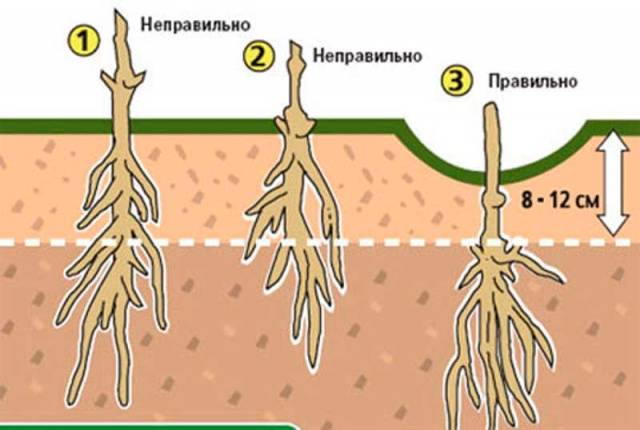



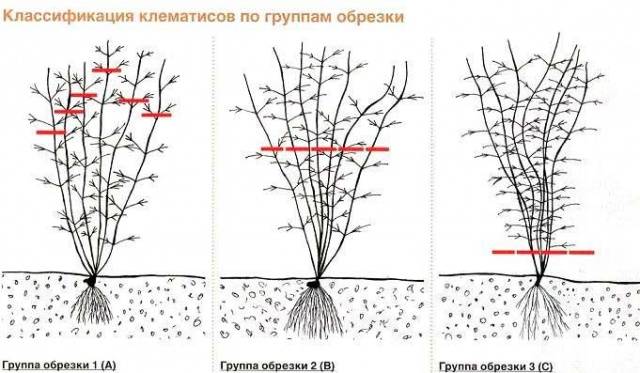

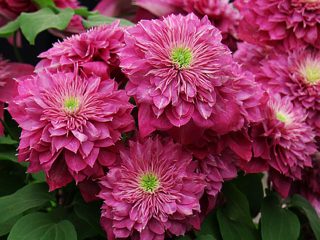

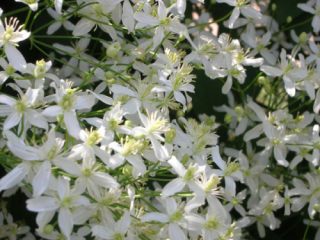
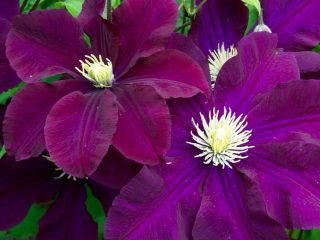
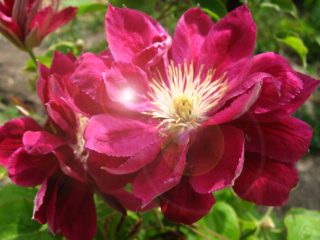
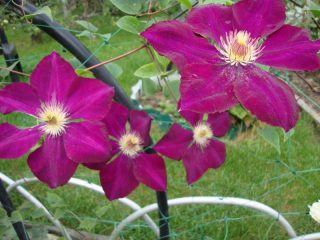


Thanks for the detailed information on caring for clematis.